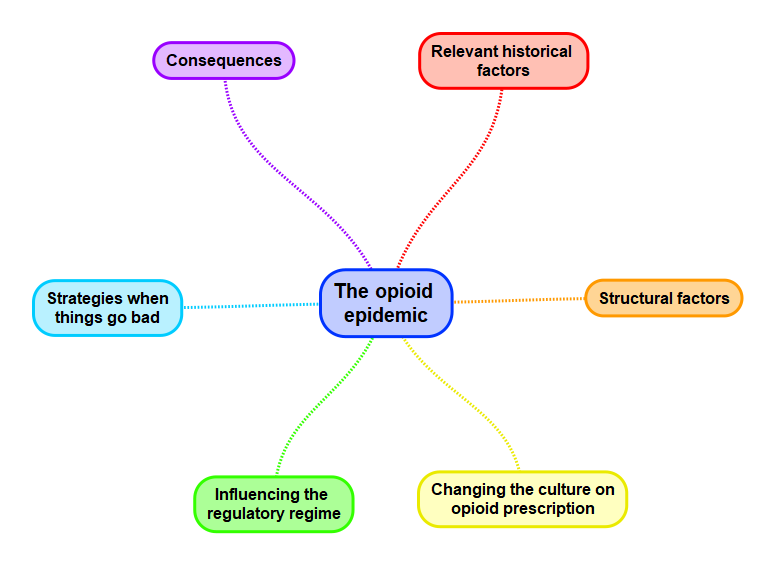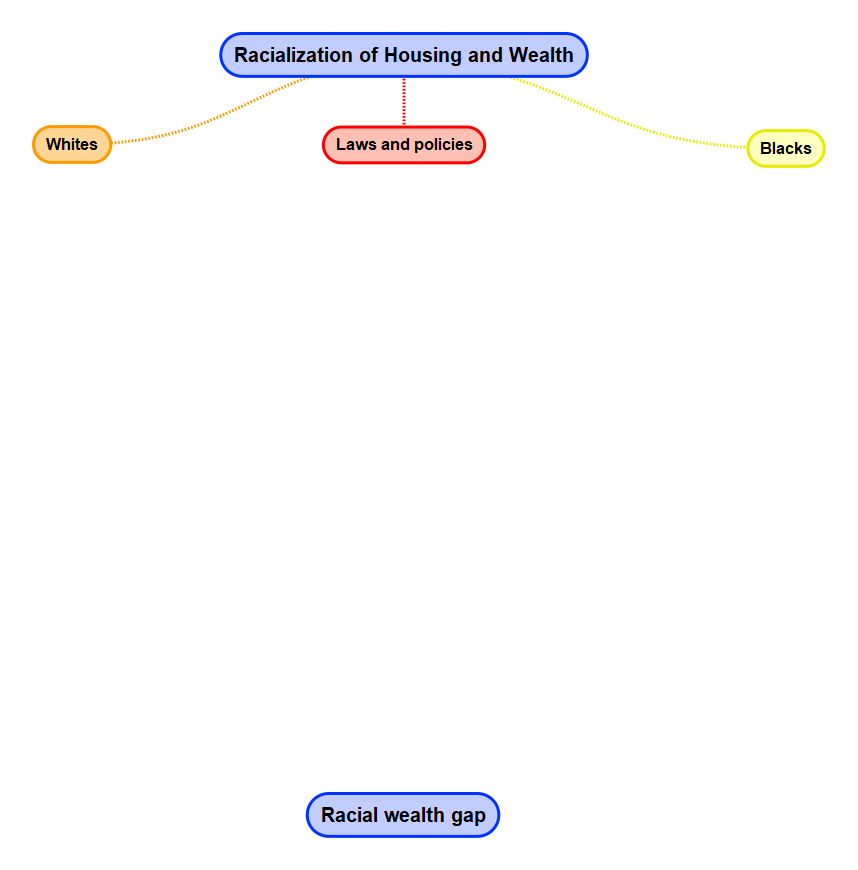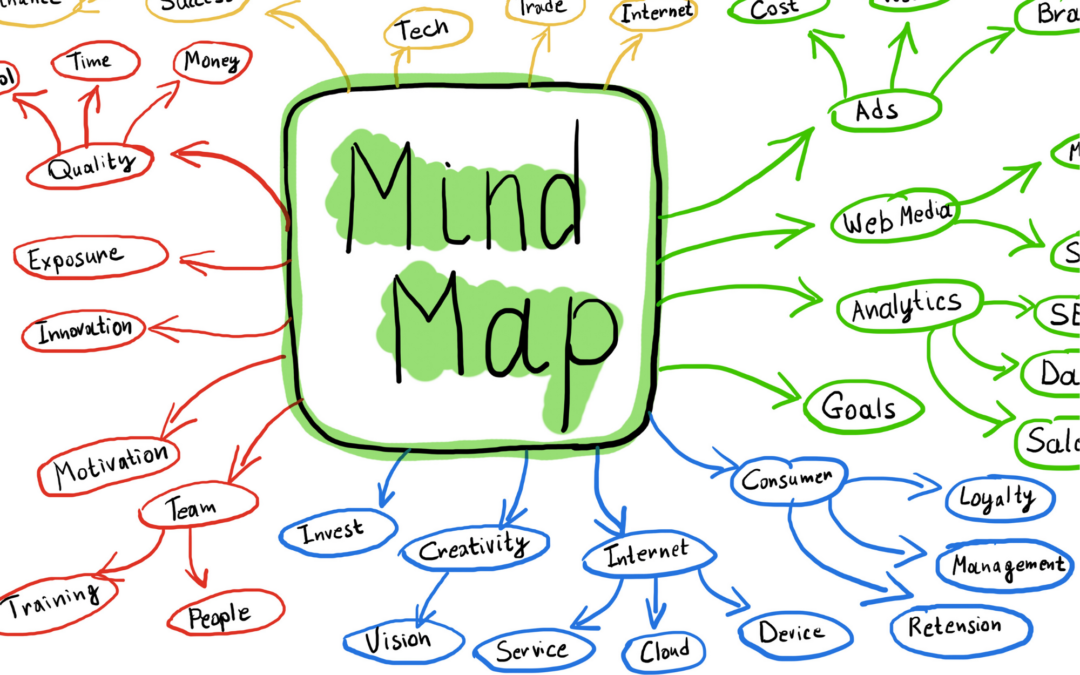In this second part, I want to show you how useful mind maps can be in mapping actual content.
I have already mentioned the benefits I see in mapping as opposed to traditional assignments and papers. Most often, I use mapping when students work with videos. This is going to sound weird, but our students do not know how to watch videos. Like my driving until running out of gas metaphor from my previous post, they will sit down and watch an assigned video once, all the way through, no matter the length. If it is a short video, say, under 20 minutes, that might work kinda. But for longer videos, that just doesn’t work. Whatever video content they’ll remember will have no rhyme or reason. They will not differentiate between main points and supporting details, between what is a central thesis, and an illustrating example, or, to pursue my bucolic analogy, they won’t be able to figure out what is a tree and what is the forest. And that jumble of disjointed thoughts will land in a paper, much to our collective dismay.
The flip side of this is that it is very possible that I am really bad at crafting essay-writing questions that don’t lead to jumbled writing and muddled thinking, with no paragraphs, first drafts. And grading such things just feels like I am wading through the rainforest with a flamethrower, trying to find the nugget of content that I can salvage for credit. And then I just get cranky.
So, mind maps are a better way.
- So far, maps have proved plagiarism-proof.
- There is no faking one’s way through mapping as much as one can do with a paper. Mapping puts the information front and center, no frills, no bloatware.
- Mapping forces students to think about overall layout, individual components, their hierarchy, and connections.
- Mapping works really well for non-linear content and multi-faceted issues.
- Mapping forces students to engage more deeply with the materials to extract the necessary information.
I should add that I don’t just tell students “just map the stuff you watched in the video.” I do tend to give detailed instructions, with a general idea of what type of information they should be looking for. If the content of a video is complex or if we are still at the beginning of the semester, I sometimes provide a starting point such as this:

Now, as the students watch the video, they know what kinds of elements they are looking for and should make a note of for subsequent mapping. That kind of pre-sorting is helpful in terms of watching with a purpose (akin to reading with a purpose). This is also forcing them to think in more sociological terms so they don’t waste brain cells on irrelevant thinking (such as focusing on how right or wrong individuals are in the video or whether such and such a person is really not nice or keeps making the wrong decisions, etc.). And when the content is really complex, I may provide further instruction as to which type of information they should include under each sub-topic.
For these assignments, I set up an adaptive release rule so that their submission triggers the release of a completed map I created, after the assignment deadline. And in case you are curious, the complete map looks like this:
Sometimes, the map is more specifically about the application of concepts. For instance, here, the students have to apply Gregory Stanton’s stages of genocide to the case of Myanmar. I have to students review these stages before watching the video. Here is their starting point:

And here is the complete map:
And here is a third example where things are slightly different: I give them a beginning and end point, and in this case, the chronology matters:

So, based on a video they have to watch, they have to fill in the space left blank.
And here is the complete map:

And in case you are wondering, yes, students have risen to the challenges of mapping. They do get the idea of what they are supposed to do, in progressively more sophisticated ways. However, I am sure they would be more comfortable just writing papers on those but I would not get anywhere near the quality I get with maps.
But look at the few examples above: these are all pretty complex topics, with a lot of moving parts. Certainly, I could just ask for papers: “explain the different institutional factors that played a part in the opioid epidemic,” “apply Gregory Stanton’s stages of genocide to the Myanmar case,” “explain how persistent racial wealth gap in the United States is rooted in public policies of housing discrimination.” But there is no way I would get all that I get out of the maps. The map do get students to more deeply engage with the materials even as they have to organize all their information in one visual setup that better captures connections, layers, and hierarchy.
I would take it further– I think maps can be applied to any field: literary analysis, lab protocols and/or experiments in the natural sciences, application of philosophical perspectives to a given topic, business case studies, etc. Moreover, maps can be the first steps to heftier products such as portfolios or capstone projects because after mapping, students have a better grasp of the information they have, in one place, represented visually.
Last but not least: maps are a lot more fun to grade than papers. I do look forward to seeing how students have mapped the different topics assigned because there is no way two students are going to end up with the exact same maps, even with the same starting point. Also, I always tell them that the test of a good map is to show it to someone who has not watched the video or knows nothing about the topic and see if they can figure it out.
So, I hope I have convinced you of the usefulness of the maps and their flexibility, in terms of what you ask the students to do with them. I should add that you don’t need super fancy software. I have had students map social media connections as a class activity, with just paper and pencils, and then, I gave all the groups a dry erase marker and they re-did on the white board so we could compare what each group ended up with. It is a simple way of visualizing and layering one’s information.
And here again is my set of tutorials on mapping:
As always, thank you for reading.
Christine


